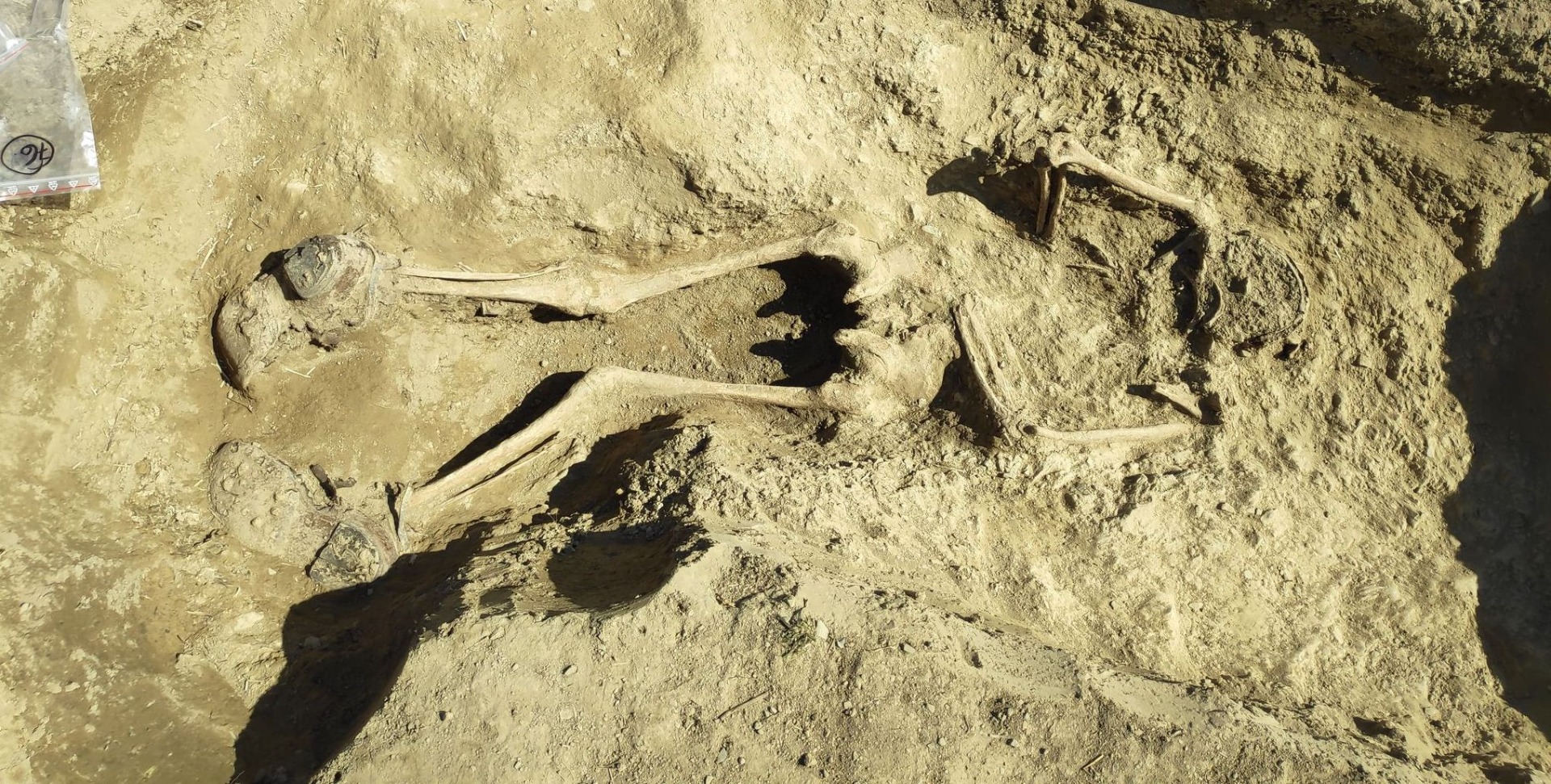Non-destructive archaeological and historical research and mapping of World War II sites in the Czech Silesia

Project result - scientific publication
The catalogue for the exhibition, conceived as a monograph on the subject, is the result of the five-year grant project "Landscape - Non-Destructive Archaeological and Historical Research and Mapping of World War II Sites in the Czech Silesia", which was carried out between 2019 and 2023 by the Silesian Museum, and which was created with the financial support of the Ministry of Culture.
Non-destructive archaeological and historical research and mapping of World War II sites in the Czech Silesia
Project duration: 2019 - 2023
The project aims to map the World War II sites in the territory of the Czech Silesia. The area of our interest fully corresponds to the scientific, collecting and territorial activities of the Silesian Museum. The project, which is a continuation of the IGS from 2018 (IGS201804/2018 - Archaeological mapping of World War II sites in the Opava district), serves both to scientifically evaluate, study and learn about sites closely linked to the history of World War II, but at the same time it is also a guide to the protection of important historical sites, which are constantly declining due to uncontrolled and unprofessional excavations, just as much as the historical sources related to the sites are irreversibly declining too.
Sites with findings from World War II can already be considered archaeological and historically valuable sites and as such should be protected in the same way as other archaeological or historically valuable sites, within the diction of Act 20/1987 Coll. on State Heritage Care.
The first step to protecting them is to map them thoroughly.
In the case of World War II sites, it is clear that the current system of archaeological conservation does not protect them or deals with them only marginally, as they lie outside the scope of the scientific interest of the relevant institutions.
From the side of various organizations, individuals and associations, there are unprofessional excavations of airplanes, tanks, graves, etc. In most cases, these activities are harmful to these sites. The works are often focused on the retrieval of the finds themselves, without taking into account the finding circumstances, post-depositional activities or transformation processes in the vicinity of the find, thus depriving us of a wide range of meaningful sources and information, which are irretrievably lost (each such finding situation is a unique and never replaceable source of information, which without a professional approach will be destroyed once and for all).
The project requires the creation of a broad interdisciplinary team of experts from the staff of the Silesian Museum (Natural History Department, Social Science Department, Conservation Department). Close cooperation between historians dealing with World War II, archaeologists and natural scientists actively links the interdisciplinary cooperation of several departments of the Silesian Museum and guarantees the quality of the processing of the topic and at the same time excellent outputs. The Silesian Museum has been dealing with this period for a long time, has the prerequisites for this activity, owns an archive of WWII sites, scientifically evaluates this period and also has a professionally equipped archaeological workplace that is able to process the topic.
- The primary interest of our study is to identify these sites directly in the field. Site inspection using non-destructive or small-scale probing archaeological methods, surveying, site documentation (using photogrammetry, drone imagery) and mapping, including presentation of findings.
- The secondary step is related to archival work leading to the preservation of the testimonies of eyewitnesses or still living participants of the events, which took place at the sites and activities of World War II (the archival materials of the World War II Memorial in Hrabyně will be used to the maximum extent).
- Tertiary steps include publications at least in peer-reviewed journals, a monograph summarizing the results of the project in the form of a synthesis, active participation in conferences and the creation of a museum exhibition on the topic.
Tasks, implementation, objective and result
The project aims to capture those factors and events of the Second World War that are not always and clearly identifiable in archival records, historical reports or other media (press, radio, television)...
- the process of archaeologization of finds over time and the principle of archaeologization itself
- soldiers' free time life around bunkers, trenches, etc.
- anthropological information about soldiers - age, diseases, injuries, consequences of death, "time of death", etc.
...or historical facts that can be reconstructed on the basis of archaeological sources through archaeological methods, both destructive and non-destructive, as well as historical study or other partial natural science methods.
Our aim is, on the basis of knowledge and identification of sites from the remains of the Second World War, their subsequent protection directly in the landscape.
This requires their initial spatial identification, which is related to:
- field data collection - e.g. through living witnesses of the events, archival research, consultation with experts, etc.
In relation to this:
- field prospecting of potentially positive sites - detector survey, small-scale probing, mapping, site documentation.
In the case of a threat to the find, site, etc.:
- research by archaeological method, excavation of findings, their subsequent conservation, processing.
What we are interested in:
A) all sites with evidence of World War II captured in the landscape:
- trenches, ditches
- plane crashes, destroyed tanks
- places of fights, skirmishes
- memorials with documents of death
- bunkers with potential space for "leisure activities" in their surroundings
B) places with the consequences of World War II
- extinct settlements
- villages
- homesteads


